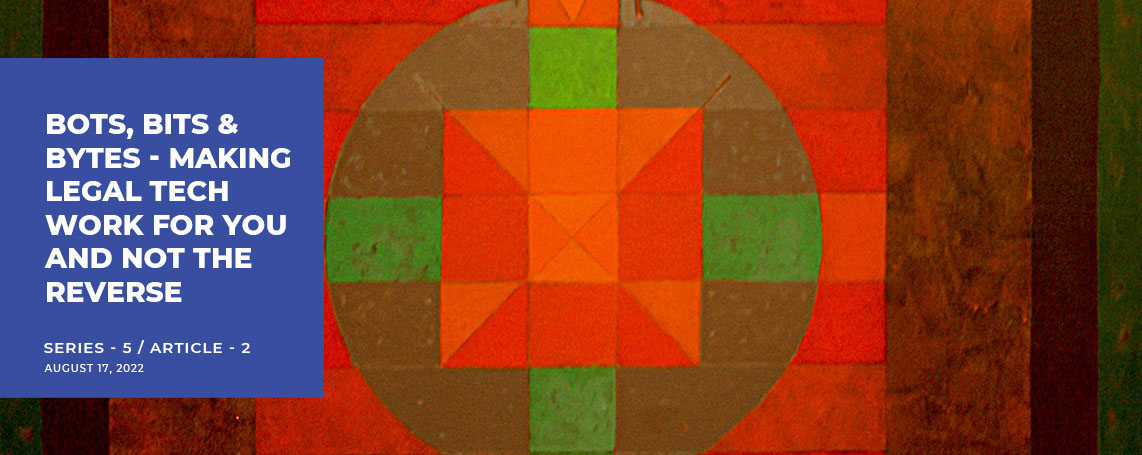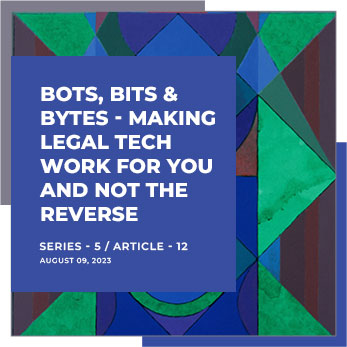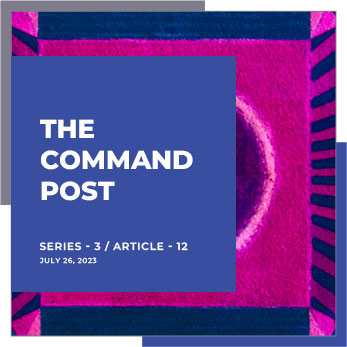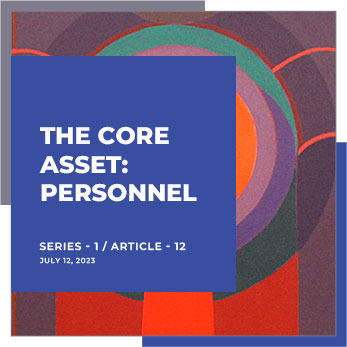From construction to fashion design, to computer science, and biotechnology, virtually every industry needs a Project Manager, with only a few being adaptable to a virtual environment.
In the field of eDiscovery, project management requires not only a grasp of universal project management skills but also a specialized competency in discerning documents falling under rules of legal evidence disclosure versus documents covered by attorney-client privilege. It is wise to examine the unique challenges posed in managing virtual eDiscovery projects with most of them moving to virtual operations in the wake of the pandemic.
The People in the Project
First, let us take a look at the commonalities between general project management and the management of legal discovery projects. In both scenarios,
the Project Manager must be someone who is capable of managing two things – people and technology. Because the Project Manager will, in every case, be managing a team regardless of size the ‘people skills’ required are those of leadership, communication, and organization. Similarly, on the administrative side, there must be an ability to adhere to a budget, deadline, and target endpoint.
But in addition, there is the need to work within a proven technical strategy tailored to project management. Among those typically cited by Project Managers are Agile, Lean, Waterfall, Scrum, and Six Sigma, many of which offer certifications in their proprietary strategic principles. Project management for eDiscovery,
on the other hand, has its own specialized technology platforms offered by the various providers.
Where eDiscovery Diverges
Unlike the typical development process found in industrial project management of going from concept to prototype, proof of
a theory, and build, eDiscovery instead deals with the raw material that is merely being filtered from
start to finish. It is a process not of construction per se, but rather one of data analysis of Electronically Stored Information (ESI) in order to balance compliance with a demand for sharing information ‘the right to discovery’ of
non-privileged documents with the strict ethical obligation not to divulge privileged material. And in that process, all ESI, including emails, instant messaging
chats, documents, accounting databases, CAD/CAM files, website content, and any other electronic information that could be deemed evidence in a lawsuit, must be reviewed.
Working with Technology
As noted above, aside from the critical element of being able to work with people, the eDiscovery Project Manager must also be competent in the relevant
ESI-sifting technology or at least be comfortable working with experts who are. Even if not in charge of predictive coding and sampling directly, the Project Manager will nevertheless be called upon to make sure that the initial automated phase of the document review is set up
properly. Working with specialized predictive coding subject matter experts, algorithmic protocols are established in order to categorize the endless ‘bytes’ of data within the ESI. This essentially replaces what would otherwise be an entirely manual review process a near impossibility given the fact that millions of emails alone can make up the bulk of ESI.
Predictive coding takes information gained from manual coding and automates that logic, applying it to a larger group of documents. Machine Learning techniques are then used to identify potentially responsive documents and train the computer to identify similar ones. However, Technology Assisted Review (TAR) cannot, at this time, replace an attorney-trained review. Therefore, it is at this point that people and technology converge.
Virtual Management
Although teams managed
by the eDiscovery Project Manager have commonly been assembled in physical Document Review Centers, the COVID-19 pandemic, along with overall shifts in employee-management attitudes towards in-office versus work-from-home scenarios, has changed the management landscape. Virtual management has added the functions of remote HR monitoring as well as client data security protection.
The Project Manager is now also tasked with expanding secure virtual private network (VPN) connectivity and increasingly adopting cloud-based eDiscovery solutions over in-house ones.
Determining where the ESI is to be stored and how it is to be accessed is not as simple in the virtual environment as in the Document Review Center scheme.
Review of the Review…
After the project is completed and the ESI has been properly categorized with regard to relevance, responsiveness, or privilege, the eDiscovery Project Manager’s job is still not quite done. A post-mortem must be conducted to answer questions such as:
- Were the stakeholders’ expectations met?
- Was there effective communication both between the Project Manager and
team and between the Project Manager and client? - Was the initial project plan good, or even the best one, or did a mid-course correction along the way to address unanticipated challenges become necessary?
- Was the team sufficiently staffed both in terms of numbers needed as well as the SME vetting process?
- Did the project stay within the bounds of its budget, or were there cost overruns that could have been managed better?
Lessons learned from the latest project should be carefully examined with an eye towards applying them to enhance and improve the next project.
The coupling of people with technology to conduct eDiscovery will be with us for a long time, and by following proven Best Practices, the eDiscovery Project Manager will succeed in this professional collaboration.
“PARALEGALS ARE OFTEN HIRED FOR INTENSIVE SUPPORT ROLES WITHIN AN ATTORNEY’S CASELOAD….….
…A WIDE RANGE OF TRULY SUBSTANTIVE LEGAL WORK CAN NOW BE LAWFULLY ASSIGNED TO A PARALEGAL”
Executive Summary
The Issue
How to ideally manage eDiscovery in a virtual environment while preserving the stakeholders’
best interests and achieving the desired endpoint?
The Gravamen
By applying ‘people skills’ that are necessary for team management, along with the application of requisite technologies, the eDiscovery Project Manager
will succeed in meeting the permissible transfer of demand ESI while filtering out any unresponsive and/or privileged material.
The Path Forward
Management of the virtual eDiscovery project has added responsibilities and challenges over the physical Document Review Center scenario. The Project Manager will therefore be required to address data security, remote connectivity, and overall remote HR management issues, in addition to the planning, budgeting, and administering that have traditionally been expected of this role.
Action Items
Meet with Client:
It is critical to interview the client in order to compose a plan of action for management of the
eDiscovery project including timelines, expectations, and costs.
Choose a Technology:
Determine which ESI sampling and TAR products are best suited for data analysis pertaining to this specific project. Is the data mostly email or is it from a collaborative platform such as Zoom, Microsoft Teams, or others? Or perhaps it largely consists of CAD/CAM engineering data requiring industry-specific analysis?
Vetting Your Team:
Staffing your team with the right SMEs related to subject litigation will help to ensure that your review is being handled by the right professionals while simultaneously reducing training time and costs.
Data Security and Access:
Ensure team members have the necessary home technology required to handle the volume of data to be received and transmitted, and they are further equipped with cutting-edge security technology precluding any opportunity for hacking or other data breach from their computer, router, or provider. Whether access is from a cloud-based server or the client’s in-house server, both ease of access and security must be guaranteed to the extent possible to the stakeholders.
Further Readings
- https://cloudnine.com/ediscoverydaily/electronic-discovery/ediscovery-best-practic- es-6-project-management-practices-to-apply-to-ediscovery-cases/
- https://www.logikcull.com/guide/introduction-to-ediscovery-basics
- https://www.lawtechnologytoday.org/2019/09/using-project-management-to-im- prove-e-discovery-processes/
- https://www.alvarezandmarsal.com/insights/beyond-email-navigating-discovery-re- lated-challenges-and-opportunities-modern-communication
- https://www.aiim.org/what-is-ediscoveryhttps://www.aiim.org/what-is-ediscovery







